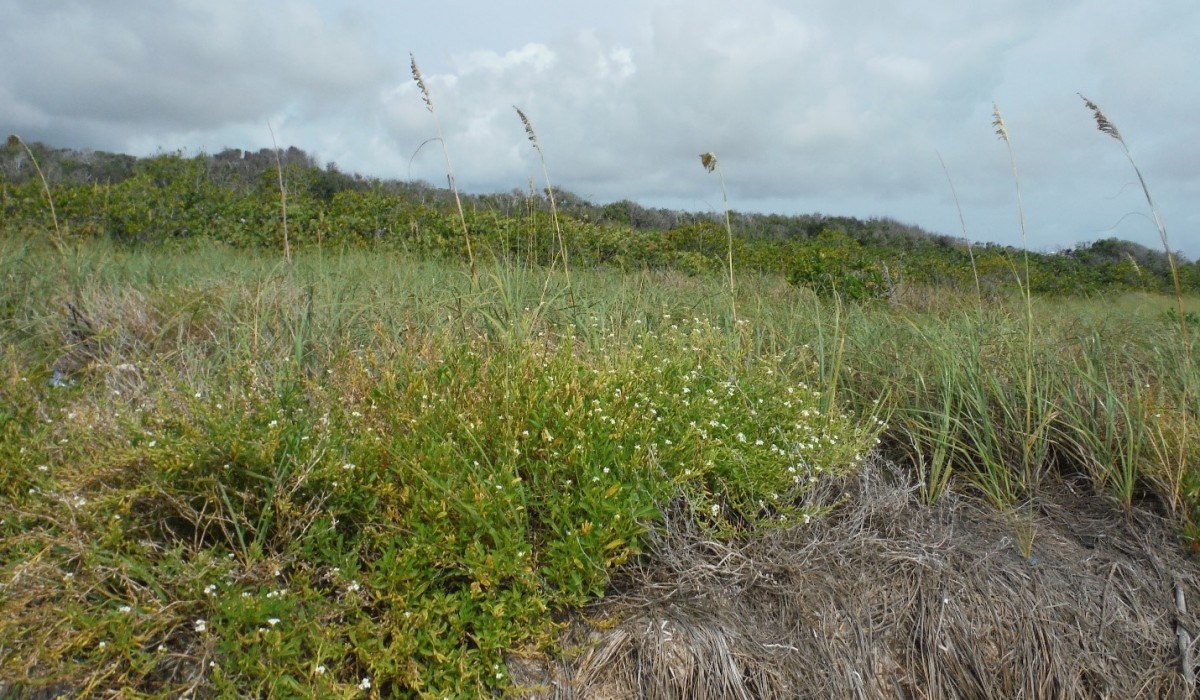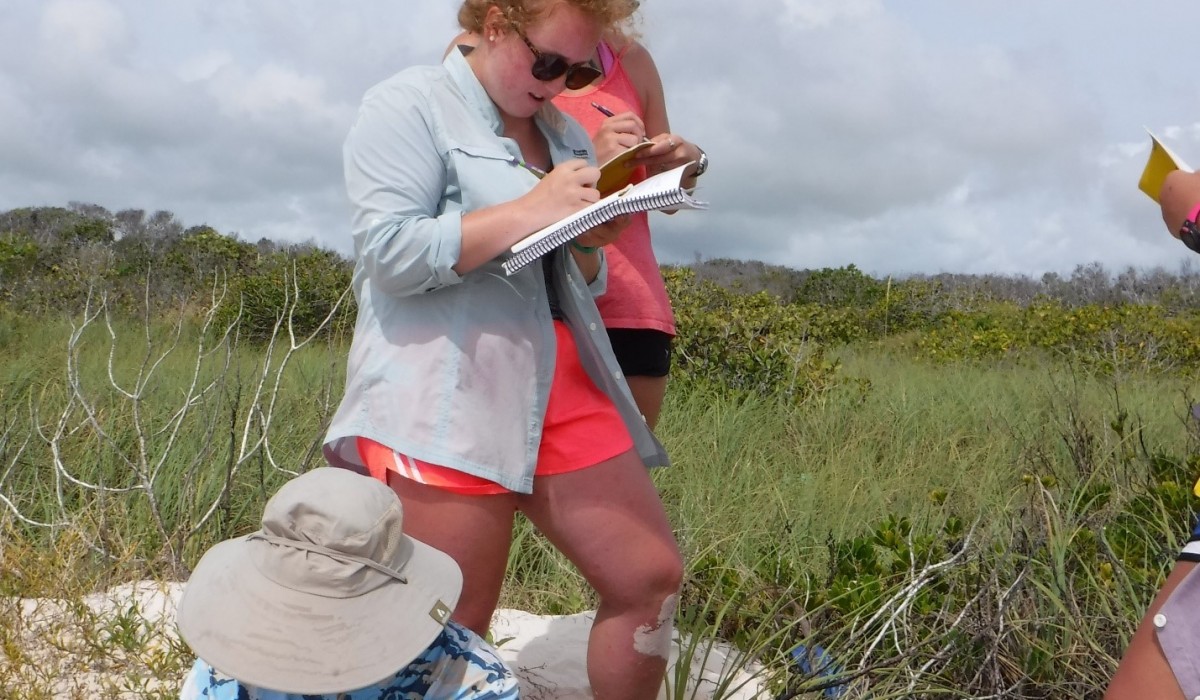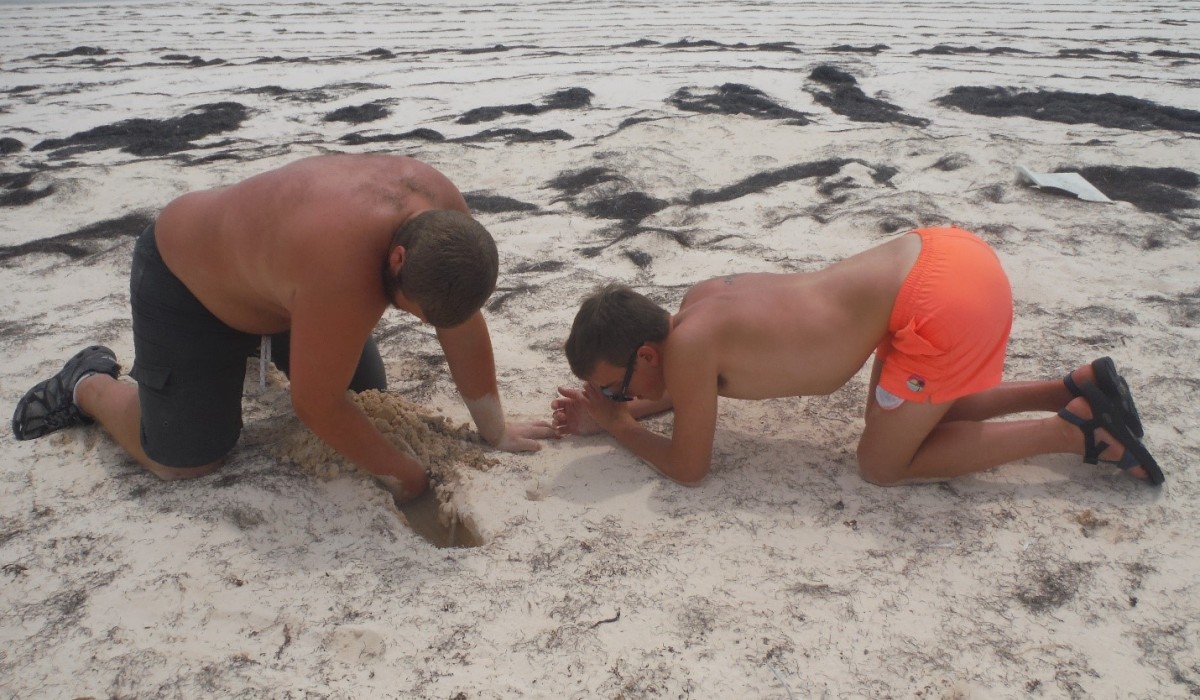Editor's note: sorry for the delay in posting--this is Saturday's post but we have been having some connectivity issues with the blog. They are resolved so we should be back to daily posts.
The students began their trek out to the site known as East Beach at around 9:30 AM. The objective of today was for the students to learn the local vegetation of San Salvador and observe this particular site. The students broke up into three different groups, were given a plant identification book, and were assigned the task of finding six new plant species to identify. After an hour of exploring the vegetation and identifying, the students gathered together to go through what they had identified. Some of the common species found amongst the sandy beach were Sea Grape, Seven Year Apple, and Woe Vine. However, a common vine—the Railroad Vine—was not as prevalent in the dunes as it was in previous years. The Railroad Vines, important in protecting the dunes, are now only found on the sides of the road and not at the edge of the primary dune. It was speculated that the hurricane might have done more damage to the terrestrial environment than students had anticipated before observing this site. The impact from the hurricane eight months ago is still apparent—debris strewn across the beach, lack of flowers on the living plants, and dead vegetation interrupting the green regrowth.
After that activity, the students were tasked with observing the site and possibly find some hidden critters. Some students took to the beach and started digging. After a few trial and errors, some students found a ghost crab escaping beneath the sand. After the initial awe died down, the dichotomy between the life on land and that in the sea was revealed. When students are exploring the reef, the amount of organisms present is overwhelming and students float and observe; when students are on land, the amount of organisms present is scarce and students dig and search.
The students returned to the GRC and, after lunch, started brainstorming the supplies necessary to complete their research projects. Many students had to be creative in what sort of supplies they would need for their research projects since the island does not have the equipment that is available at Witt. Some students asked for the general supplies such as cardboard and duct tape, and other students required supplies such as PVC pipe to act as a transect boundary. All of the project ideas are coming together and the students are excited to begin experimenting on interesting things they have found thus far on San Salvador.
Anna Aylor '18 and Tabitha Martin '18




